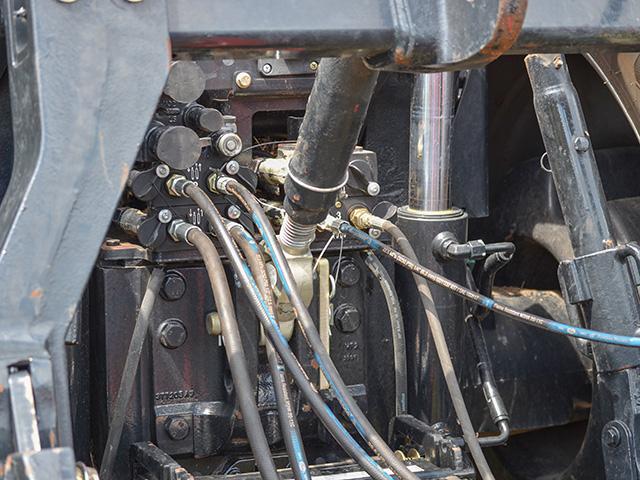Hydraulic Hoses Need Care in Winter
Hydraulic Hoses Require Attention in Winter Due to Extreme Temperatures
OMAHA (DTN) -- Ag producers who operate machinery with hydraulic systems year-round may not give much thought to the effects of temperature on hydraulic hoses. But, especially during the cold winter, they need to ensure these hoses are in good shape or hoses could fail in the extreme cold, leading to potentially serious injuries.
A recent news release from North Dakota State University (NDSU) titled "Handling Hydraulic Hoses Requires Extra Caution in Winter" reminds ag producers to think about this common component of farm machinery. (https://www.ag.ndsu.edu/…)
Angie Johnson, NDSU Extension farm and ranch safety coordinator, said that hydraulic hoses need to be in good condition to withstand the extreme temperatures seen in the Northern Plains.
"The temperature of a piece of machinery can fluctuate from minus 20 degrees Fahrenheit (F) to 200 degrees F in a matter of minutes," Johnson said.
Hydraulic systems are critical for tractors and machinery to work properly and conduct chores year-round. These systems store fluid under high pressure, typically 2,000 pounds of pressure per square inch (psi), up to 3,000 psi.
The failure of a hydraulic hose can be a dangerous event, potentially causing severe harm to the operator in the form of burns, skin penetration or crushing injuries from component failure.
As pressure increases, the operating temperature of modern hydraulic systems can become high enough to cause severe burns if the operator is sprayed by escaping hydraulic oil from a puncture in the line or the release of highly pressurized oil from a loose hydraulic fitting.
To avoid getting burned with hydraulic fluid, NDSU suggests machinery operators always relieve hydraulic pressure before loosening hydraulic fittings. This includes moving the hydraulic control lever back and forth several times to relieve pressure. In addition, follow instructions in the operator's manual.
P[L1] D[0x0] M[300x250] OOP[F] ADUNIT[] T[]
DANGEROUS PINHOLE LEAKS
Pinhole leaks in hydraulic hose lines are extremely dangerous. A common injury involves an operator running a hand or even a finger over the hose line, where the invisible pinhole leak then penetrates oil into the operator's skin without the person even knowing it.
If not immediately seen by a medical provider, the injury can result in a condition called gangrene, where amputation of the hand or finger is required because of the tissue damage.
NDSU suggests farm producers use a piece of paper or cardboard to check for a pinhole leak in hydraulic hoses. After shutting down all equipment and releasing the pressure, run the paper or cardboard across the hose to identify any leaks. Always wear safety glasses and heavy gloves when working with hydraulic systems.
COMPONENT FAILURE OR COLLAPSE
Another danger when working with hydraulic systems is potential component failure or collapse, such as a loader on a tractor or a header on a combine.
Gradual leaks can also cause components to drop unexpectedly, crushing the operator under the component. A combine header can weigh three tons and crush anyone who may be working underneath it.
Never work under an implement, truck bed or other machine supported by a hydraulic ram/cylinder without the lock in place or other means of support, according to NDSU. Make sure all equipment is turned off when working on it.
MAINTAIN HOSES
Proper maintenance of hydraulic hoses is an important safety precaution. In the cold, hydraulic hoses can be stiff, inelastic, brittle and lose their ability to bend.
Cracks in a hose can become more pronounced in the winter, meaning visual inspections for cracks, abrasions and oily residues is crucial for equipment maintenance and safety.
NDSU suggests ag producers take the time to check for oil leaks and worn hoses. Change the hydraulic oil and filters in tractors and machinery.
Allow tractors to warm up in cold conditions. Connect the correct hydraulic lines from the equipment to the tractor couplers. Always lower the hydraulic working units to the ground before working on or leaving the machine, according to the report.
"Remember, tractors and equipment can be replaced -- you, on the other hand, cannot be replaced," Johnson said. "Take time for safety this winter by keeping equipment in proper shape and using safe techniques when equipment repairs and maintenance needs to be made."
Russ Quinn can be reached at Russ.Quinn@dtn.com
Follow him on Twitter @RussQuinnDTN
(c) Copyright 2023 DTN, LLC. All rights reserved.




